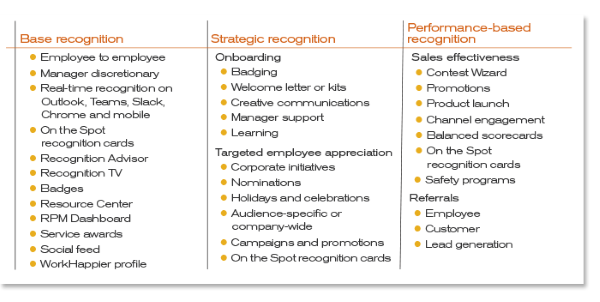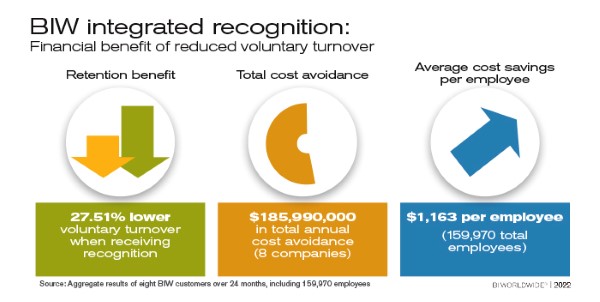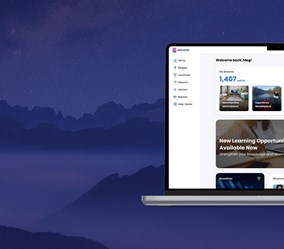6 Best Employee Retention Strategies for 2024
Written by: John O'Brien
(View Author Bio)
Your employee retention strategy should be a top priority.
A study by Equifax Workforce Solutions showed that 40% of turnover occurs within the first six months of an employee’s job experience. With a talent mobile workforce, employees have a wider range of potential employers to evaluate than ever before.
Scroll Down
The Challenge
A critical issue that organizations face is how to attract and retain employees. Companies must anticipate impending shortages of overall talent as well as a shortfall of employees with the specialized competencies needed to stay ahead of the competition.
What Impacts Employee Retention?
Studies have shown that employees typically follow four primary paths to turnover, each of which has different implications for an organization:
- Employee dissatisfaction. Attack this issue with traditional retention strategies such as monitoring workplace attitudes and addressing the drivers of turnover.
- Better alternatives. Retain employees by ensuring that the organization is competitive in terms of rewards, developmental opportunities, and the quality of the work environment. Be prepared to deal with external offers for valued employees.
- A planned change. Some employees may have a predetermined plan to quit (e.g., if their spouse becomes pregnant, if they get a job advancement opportunity, if they are accepted into a degree program). However, increasing rewards tied to tenure or in response to employee needs may alter the plans of some employees. For example, if a company is seeing exits based on family-related plans, more generous parental leave and family-friendly policies may help reduce the impact.
- A negative experience. Employees sometimes leave on impulse, without any plan for the future. Generally, this is the result of a negative response to a specific action (e.g., being passed over for a promotion or experiencing difficulties with a supervisor). Analyze the types and frequencies of work-related issues that are driving employees to leave. Provide training to minimize prevalent negative interactions (e.g., harassment, bullying, or unfair and inconsistent treatment) and provide support mechanisms to deal with those problems (e.g., conflict resolution procedures, alternative work schedules or employee assistance programs).
Key Retention Strategies and Best Practices
Practices that contribute to retention arise in all areas of human resources (HR), and all roles within an organization will need to work together to develop and implement multifaceted retention strategies. Broad-based and targeted strategies, or a combination of both, may be appropriate depending on the circumstances.
Effective Practices
Effective practices in a number of areas can be especially powerful in enabling an organization to achieve its retention goals. These areas include:
- Recruitment. Recruitment practices can strongly influence turnover, and considerable research shows that presenting applicants with a realistic job preview during the recruitment process has a positive effect on the retention of those new hires.
- Onboarding/employee career mobility turnover is often high among new employees. Socialization practices—delivered via a strategic onboarding and assimilation program—can help new hires become embedded in the company and thus more likely to stay. These practices include shared and individualized learning experiences, formal and informal activities that help people get to know one another, and the assignment of more seasoned employees as role models for new hires.
- Training and development. If employees are not given opportunities to continually update their skills, they are more inclined to leave.
- Employee recognition strategies. Pay levels and satisfaction are only modest predictors of an employee's decision to leave the organization; however, a company has three possible strategies:
- Lead the market with respect to compensation and rewards.
- Tailor rewards to individual needs in a person-based pay structure.
- Explicitly link rewards to retention.
- Manager engagement. Several studies have suggested that fair treatment by a supervisor is the most important determinant of retention. This would lead a company to focus on supervisory and management development and communication skill-building.
- Employee engagement. Engaged employees are satisfied with their jobs, enjoy their work and the organization, believe that their job is important, take pride in their company, and believe that their employer values their contributions. One study found that highly engaged employees were 5x less likely to quit than employees who were not engaged.
Business Case
What is the financial impact of talent mobility and the return on new/incremental or reallocated non-employee recognition program spend?
- Reduce attrition and increase productivity.
- 59% of people are at their most productive when working remotely, whether at home or in a public space like a café (Avast Business).
- A 2021 report from Gallup found workers are most engaged when working remotey 60-80% of the time (Gallup).
- Talent mobile managers are more effective and experience lower turnover
- 50% of employees leave a job or company due to a bad manager sometime within their career. (Gallup).
- Increase innovation.
- A talent mobile workforce opens avenues for companies to utilize a greater pool of expertise from around the globe, thus allowing companies to curate more innovative thinking (Harvard Online).
- Organizations that embrace open innovation have a 59% higher rate of revenue growth compared to those that don’t (IBM).
6 Proven Employee Retention Strategies
- Activate talent mobility across all career journeys or paths by connecting all essential elements (i.e., people, platforms, opportunities, etc.) and maximizing investments in learning and development to benefit the company and employees.
- Accelerate, enhance, reinforce, and increase the effectiveness of talent journeys or paths such as new-hire onboarding, upskilling/reskilling, personal growth plans (PGP), and leadership development.
- Reduce physical and mental resignations by hiring within. LinkedIn’s Global Talent Trends 2020 report found that employees stick around 41% longer at companies that regularly hire from within.
- Create a line of sight for employees, managers and leaders regarding career journeys or paths, opportunities, progress, impact, etc.
- Help build a community of sorts to foster stronger connections, especially given hybrid and work from home models, and identify, develop, and link talent; leverage social/mobile; reciprocal two-way street (employee and company)
- Inspire, support, recognize and reward the achievements of (in)formal, ad hoc and/or cross-functional teams for identifying, defining, and resolving issues and/or achieving stated goals. Teams create a stronger sense of community. Informal, ad hoc and/or cross-functional teams are an excellent opportunity to engage and develop high-potential employees.
At BI WORLDWIDE (BIW) Canada, we believe the best and most impactful way to utilize your recognition budget is to implement a three-dimensional strategy that encompasses base recognition, strategic recognition, and performance-based recognition. Each of these levels has its own distinct focus, features, and programs.

This three-dimensional, integrated recognition strategy has been implemented by multiple BIW clients and has led to significant reductions in voluntary turnover and major financial benefits as evidenced below.

The best way to get started is to get in touch.





















